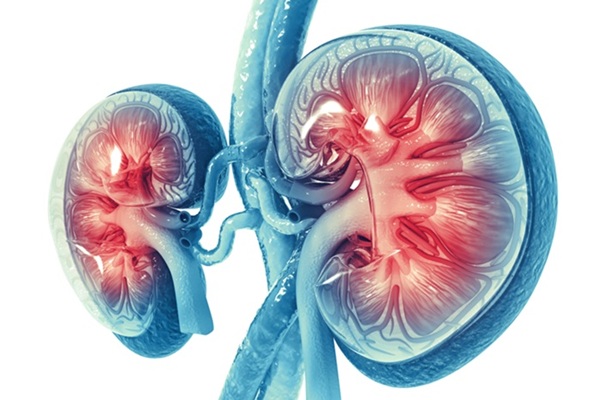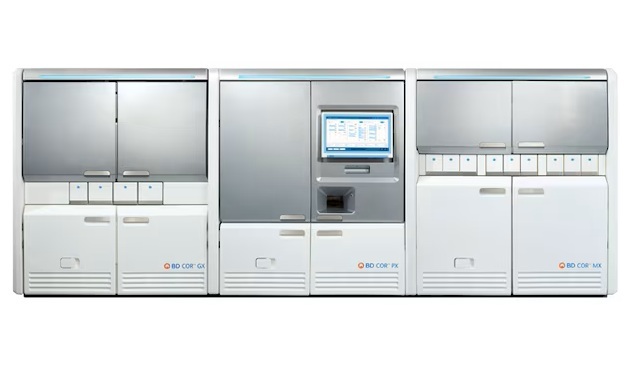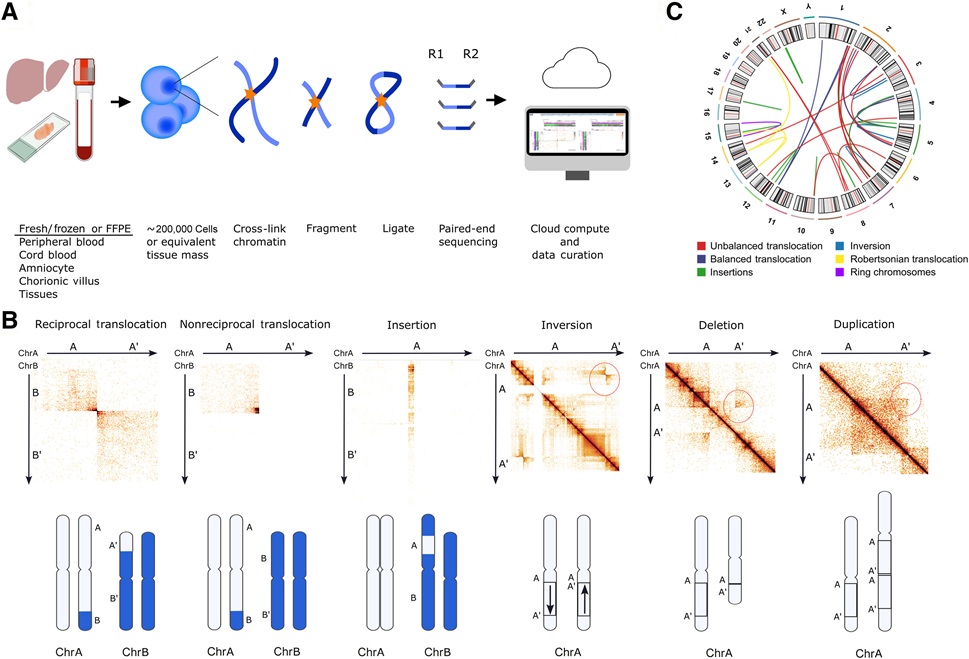New Genetic Factors Involved in Sudden Unexpected Death in Children
|
By LabMedica International staff writers Posted on 29 Apr 2021 |

Image: New genetic factors involved in Sudden Unexpected Death in Pediatrics (SUDP) have been revealed by combining exome sequencing analysis with detailed phenotyping (Photo courtesy of Boston Children`s Hospital)
About 10% of deaths in infants and children occur suddenly and have no apparent cause. Sudden Unexpected Death in Pediatrics (SUDP) encompasses several related phenomena, including Sudden Infant Death Syndrome (SIDS), Sudden Unexplained Death in Childhood (SUDC), and Sudden Unexpected Infant Death (SUID).
The most widely accepted explanation for these unexplained deaths, is that children with an intrinsic, or genetic, predisposition experience some sort of extrinsic risk, such as soft bedding or a certain sleep position, during a critical period of their development. A new study has found several genes with functions in neurological disease or systemic/syndromic conditions that had not previously been implicated in the SUDP.
Medical Scientists at the Boston Children's Hospital (Boston, MA, USA) and their colleagues surveyed a total of 352 SUDP cases, including 73 with parental samples. The age of death in these children ranged from one day to 11 years, with an average of six months, and the team obtained detailed phenotypic descriptions for them. The investigators conducted exome sequencing and analyzed the data for rare damaging variants in genes involved in neurological, cardiac, and systemic or syndromic disease mechanisms, a list of 294 potential SUDP genes. They classified variants as pathogenic, likely pathogenic, and variants of uncertain significance (VUS) and introduced an additional category, called VUS-favor pathogenic (VUS-FP).
In a proband-only analysis, they identified 109 rare damaging variants in 98 probands, or 28% of which 12 were classified as pathogenic or likely pathogenic and 17 as VUS-FP. This was a higher burden of such variants than in healthy controls. In addition, an analysis of the parent-proband exome data uncovered 51 de novo variants, of which eight were classified as pathogenic/likely pathogenic or VUS-FP, as well as 13 X-linked maternally inherited variants. A burden analysis found that SUDP trios had almost three times more rare damaging de novo variants than controls, suggesting that these variants play a causal role.
Overall, the scientists identified 38 rare damaging variants, 16 pathogenic or likely pathogenic and 22 VUS-FP variants in the SUDP cases, accounting for 11% of all cases. Of those, 14 were in neurological, 18 in cardiac, and six in systemic/syndromic disease genes. Variants in cardiac disease genes all occurred in children who died within their first year of life.
The authors concluded that their results suggest that genetic factors play an important role in SUDP. The findings can provide bereaved parents with an explanation of why their child died, help identify at-risk family members, and lead to counseling about recurrence risk. The study was presented at the American College of Medical Genetics and Genomics annual clinical meeting held virtually on 13-16 April, 2021.
Related Links:
Boston Children's Hospital
The most widely accepted explanation for these unexplained deaths, is that children with an intrinsic, or genetic, predisposition experience some sort of extrinsic risk, such as soft bedding or a certain sleep position, during a critical period of their development. A new study has found several genes with functions in neurological disease or systemic/syndromic conditions that had not previously been implicated in the SUDP.
Medical Scientists at the Boston Children's Hospital (Boston, MA, USA) and their colleagues surveyed a total of 352 SUDP cases, including 73 with parental samples. The age of death in these children ranged from one day to 11 years, with an average of six months, and the team obtained detailed phenotypic descriptions for them. The investigators conducted exome sequencing and analyzed the data for rare damaging variants in genes involved in neurological, cardiac, and systemic or syndromic disease mechanisms, a list of 294 potential SUDP genes. They classified variants as pathogenic, likely pathogenic, and variants of uncertain significance (VUS) and introduced an additional category, called VUS-favor pathogenic (VUS-FP).
In a proband-only analysis, they identified 109 rare damaging variants in 98 probands, or 28% of which 12 were classified as pathogenic or likely pathogenic and 17 as VUS-FP. This was a higher burden of such variants than in healthy controls. In addition, an analysis of the parent-proband exome data uncovered 51 de novo variants, of which eight were classified as pathogenic/likely pathogenic or VUS-FP, as well as 13 X-linked maternally inherited variants. A burden analysis found that SUDP trios had almost three times more rare damaging de novo variants than controls, suggesting that these variants play a causal role.
Overall, the scientists identified 38 rare damaging variants, 16 pathogenic or likely pathogenic and 22 VUS-FP variants in the SUDP cases, accounting for 11% of all cases. Of those, 14 were in neurological, 18 in cardiac, and six in systemic/syndromic disease genes. Variants in cardiac disease genes all occurred in children who died within their first year of life.
The authors concluded that their results suggest that genetic factors play an important role in SUDP. The findings can provide bereaved parents with an explanation of why their child died, help identify at-risk family members, and lead to counseling about recurrence risk. The study was presented at the American College of Medical Genetics and Genomics annual clinical meeting held virtually on 13-16 April, 2021.
Related Links:
Boston Children's Hospital
Latest Pathology News
- 3D Genome Mapping Tool to Improve Diagnosis and Treatment of Genetic Diseases
- New Molecular Analysis Tool to Improve Disease Diagnosis
- Tears Offer Noninvasive Alternative for Diagnosing Neurodegenerative Diseases
- AI-Powered Method Combines Blood Data to Accurately Measure Biological Age
- AI Tool Detects Cancer in Blood Samples In 10 Minutes
- AI Pathology Analysis System Delivers Comprehensive Cancer Diagnosis
- AI Improves Cervical Cancer Screening in Low-Resource Settings
- New Multi-Omics Tool Illuminates Cancer Progression
- New Technique Detects Genetic Mutations in Brain Tumors During Surgery within 25 Minutes
- New Imaging Tech to Improve Diagnosis and Treatment of Skin Cancers
- Serially Testing Brain Tumor Samples Reveals Treatment Response in Glioblastoma Patients
- High-Accuracy Tumor Detection Method Offers Real-Time Surgical Guidance
- AI Tool Detects Hidden Warning Signs of Disease Inside Single Cells
- Automated Tool Detects Early Warning Signs of Breast Cancer
- New Software Tool Improves Analysis of Complex Spatial Data from Tissues
- AI Tool Helps Surgeons Distinguish Aggressive Glioblastoma from Other Brain Cancers in Real-Time
Channels
Clinical Chemistry
view channel
VOCs Show Promise for Early Multi-Cancer Detection
Early cancer detection is critical to improving survival rates, but most current screening methods focus on individual cancer types and often involve invasive procedures. This makes it difficult to identify... Read more
Portable Raman Spectroscopy Offers Cost-Effective Kidney Disease Diagnosis at POC
Kidney disease is typically diagnosed through blood or urine tests, often when patients present with symptoms such as blood in urine, shortness of breath, or weight loss. While these tests are common,... Read moreHematology
view channel
ADLM’s New Coagulation Testing Guidance to Improve Care for Patients on Blood Thinners
Direct oral anticoagulants (DOACs) are one of the most common types of blood thinners. Patients take them to prevent a host of complications that could arise from blood clotting, including stroke, deep... Read more
Viscoelastic Testing Could Improve Treatment of Maternal Hemorrhage
Postpartum hemorrhage, severe bleeding after childbirth, remains one of the leading causes of maternal mortality worldwide, yet many of these deaths are preventable. Standard care can be hindered by delays... Read more
Pioneering Model Measures Radiation Exposure in Blood for Precise Cancer Treatments
Scientists have long focused on protecting organs near tumors during radiotherapy, but blood — a vital, circulating tissue — has largely been excluded from dose calculations. Each blood cell passing through... Read moreImmunology
view channel
Chip Captures Cancer Cells from Blood to Help Select Right Breast Cancer Treatment
Ductal carcinoma in situ (DCIS) accounts for about a quarter of all breast cancer cases and generally carries a good prognosis. This non-invasive form of the disease may or may not become life-threatening.... Read more
Blood-Based Liquid Biopsy Model Analyzes Immunotherapy Effectiveness
Immunotherapy has revolutionized cancer care by harnessing the immune system to fight tumors, yet predicting who will benefit remains a major challenge. Many patients undergo costly and taxing treatment... Read moreMicrobiology
view channel
High-Throughput Enteric Panels Detect Multiple GI Bacterial Infections from Single Stool Swab Sample
Gastrointestinal (GI) infections are among the most common causes of illness worldwide, leading to over 1.7 million deaths annually and placing a heavy burden on healthcare systems. Conventional diagnostic... Read more
Fast Noninvasive Bedside Test Uses Sugar Fingerprint to Detect Fungal Infections
Candida bloodstream infections are a growing global health threat, causing an estimated 6 million cases and 3.8 million deaths annually. Hospitals are particularly vulnerable, as weakened patients after... Read morePathology
view channel
3D Genome Mapping Tool to Improve Diagnosis and Treatment of Genetic Diseases
Standard laboratory tests often fail to detect complex DNA rearrangements that underlie many genetic diseases. To bridge this diagnostic gap, researchers have developed a 3D chromosome mapping method that... Read more
New Molecular Analysis Tool to Improve Disease Diagnosis
Accurately distinguishing between similar biomolecules such as proteins is vital for biomedical research and diagnostics, yet existing analytical tools often fail to detect subtle structural or compositional... Read more
Tears Offer Noninvasive Alternative for Diagnosing Neurodegenerative Diseases
Diagnosing and monitoring eye and neurodegenerative diseases often requires invasive procedures to access ocular fluids. Ocular fluids like aqueous humor and vitreous humor contain valuable molecular information... Read moreTechnology
view channel
Portable Biosensor Diagnoses Psychiatric Disorders Using Saliva Samples
Early diagnosis of psychiatric disorders such as depression, schizophrenia, and bipolar disorder remains one of medicine’s most pressing challenges. Current diagnostic methods rely heavily on clinical... Read more
Cell-Sorting Device Uses Electromagnetic Levitation to Precisely Direct Cell Movement
Sorting different cell types—such as cancerous versus healthy or live versus dead cells—is a critical task in biology and medicine. However, conventional methods often require labeling, chemical exposure,... Read moreIndustry
view channel
Co-Diagnostics Forms New Business Unit to Develop AI-Powered Diagnostics
Co-Diagnostics, Inc. (Salt Lake City, UT, USA) has formed a new artificial intelligence (AI) business unit to integrate the company's existing and planned AI applications into its Co-Dx Primer Ai platform.... Read more










 (3) (1).png)












